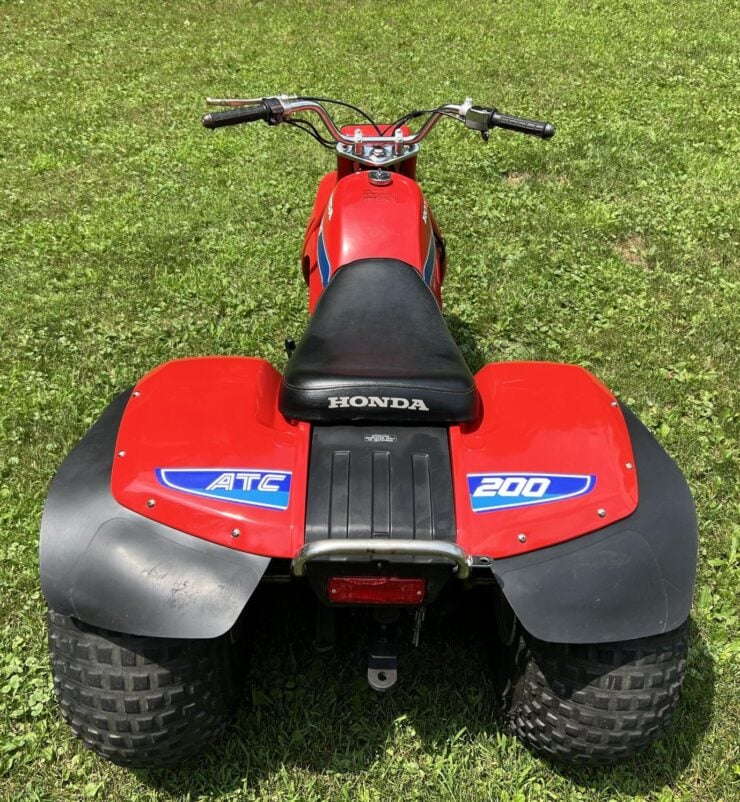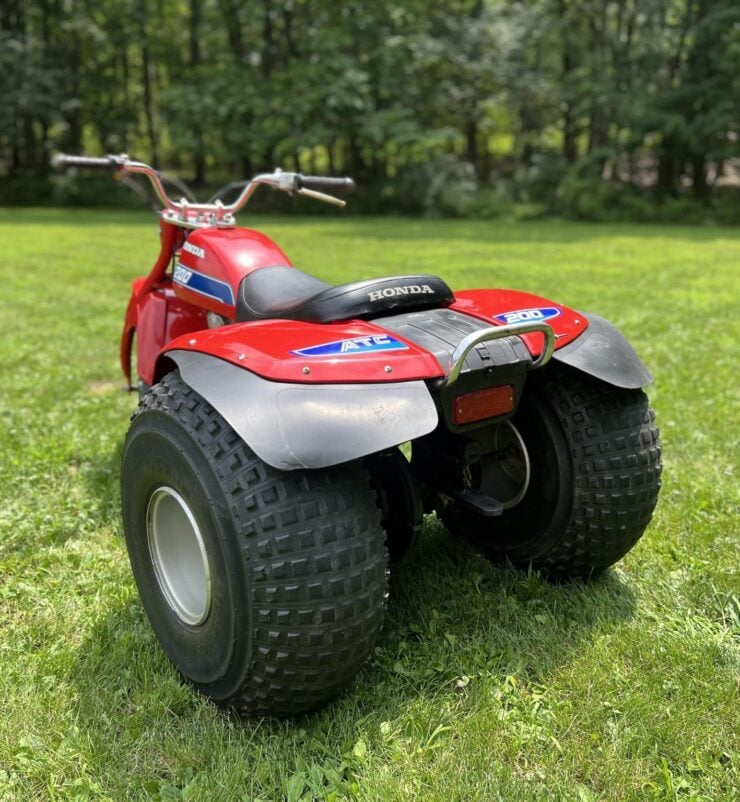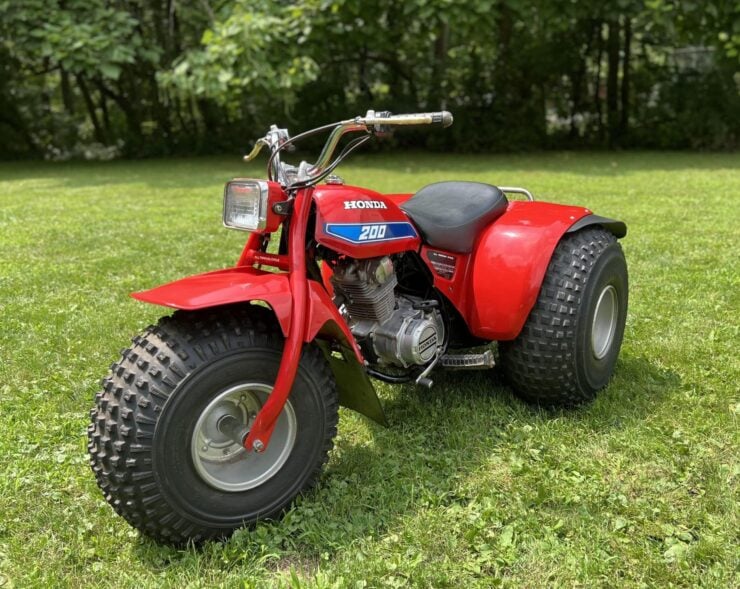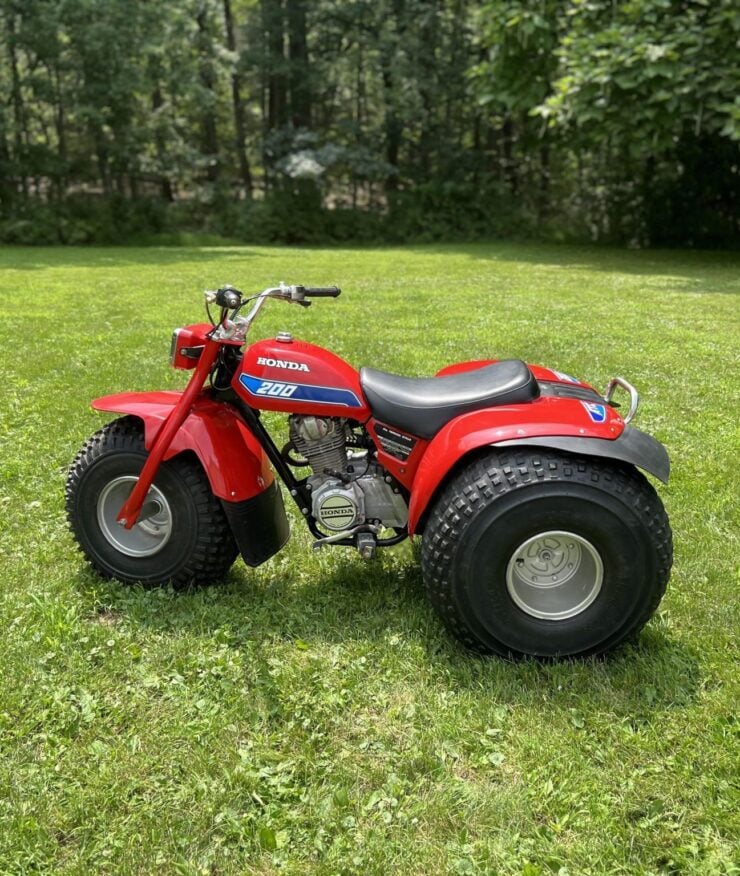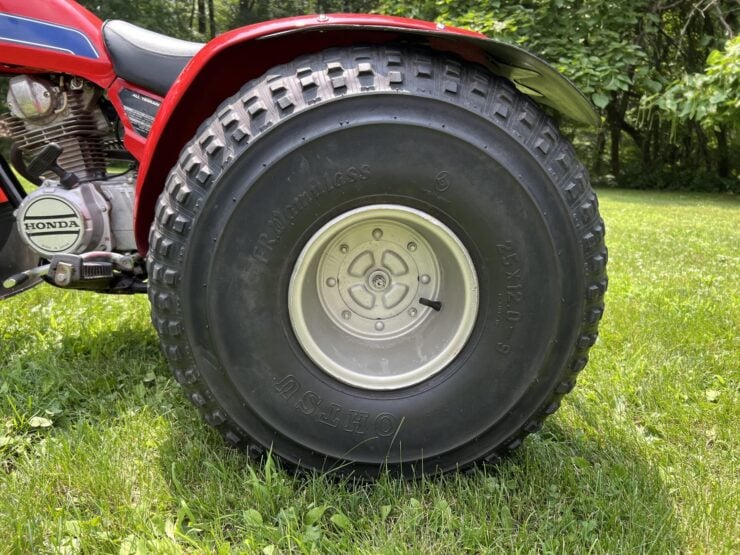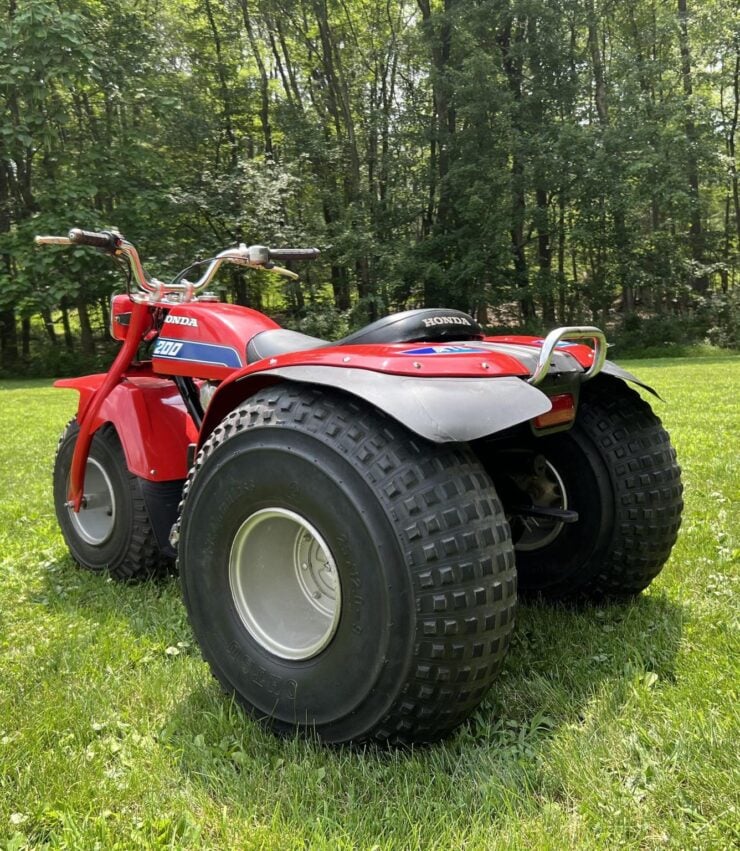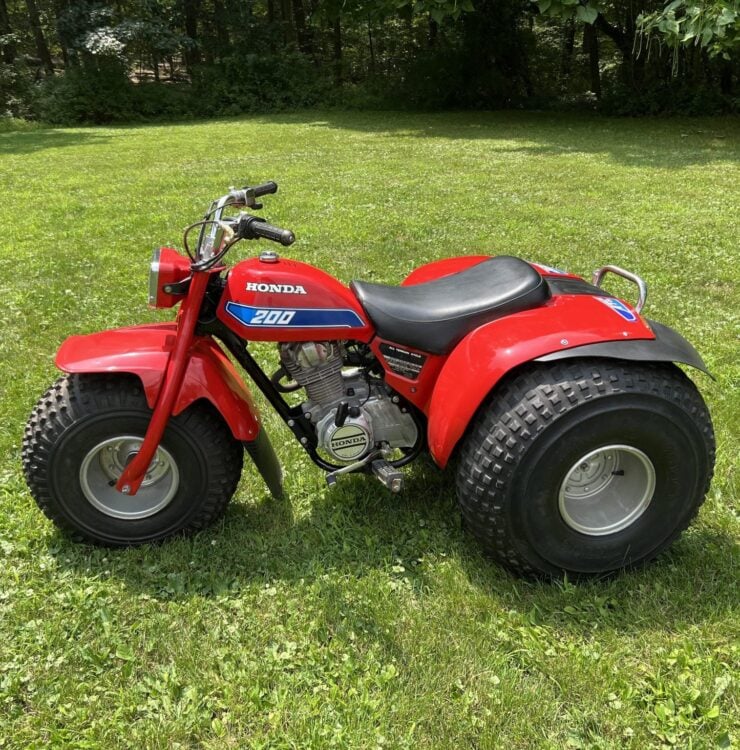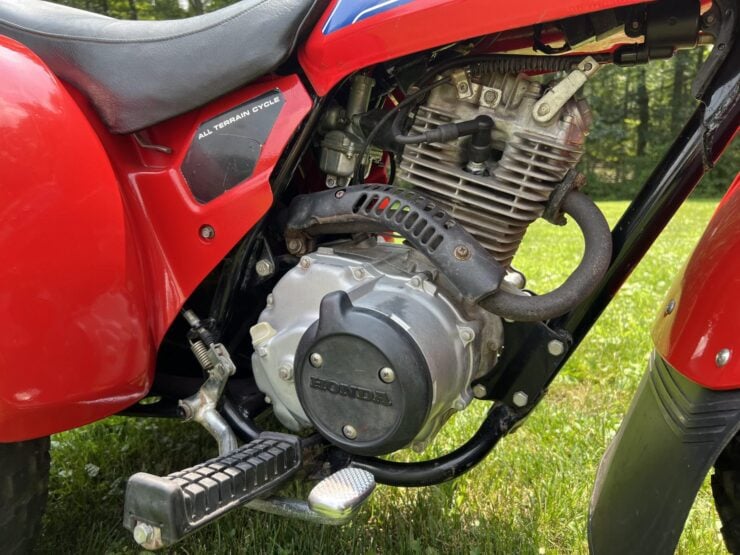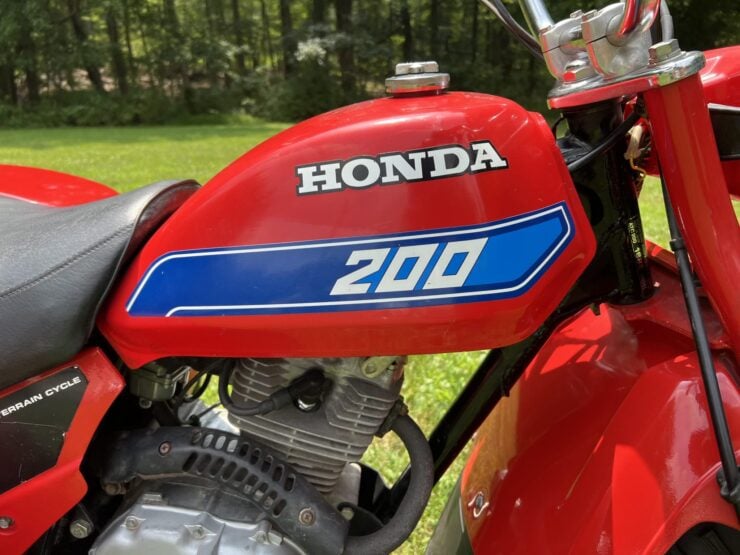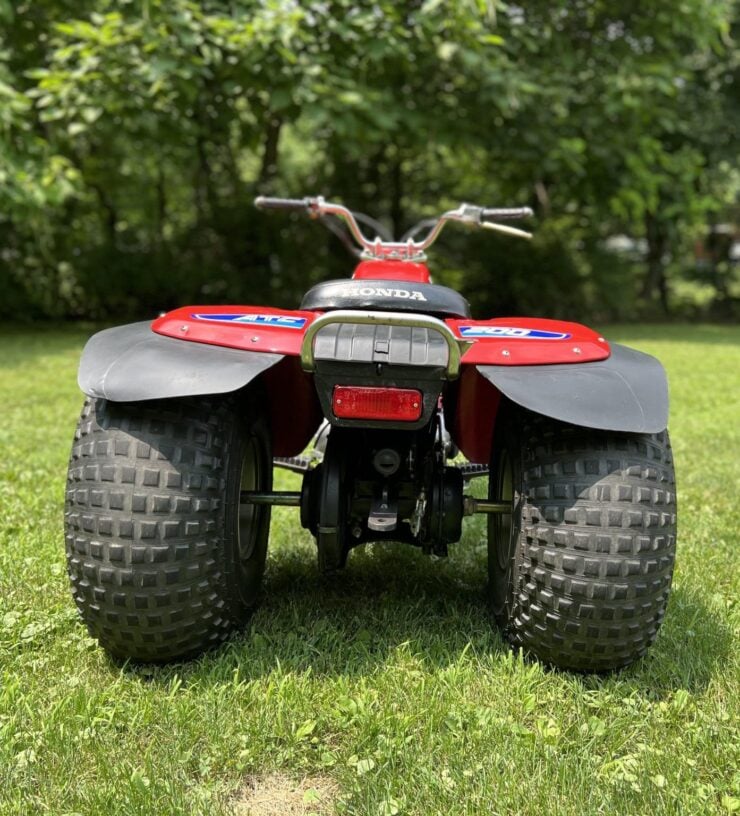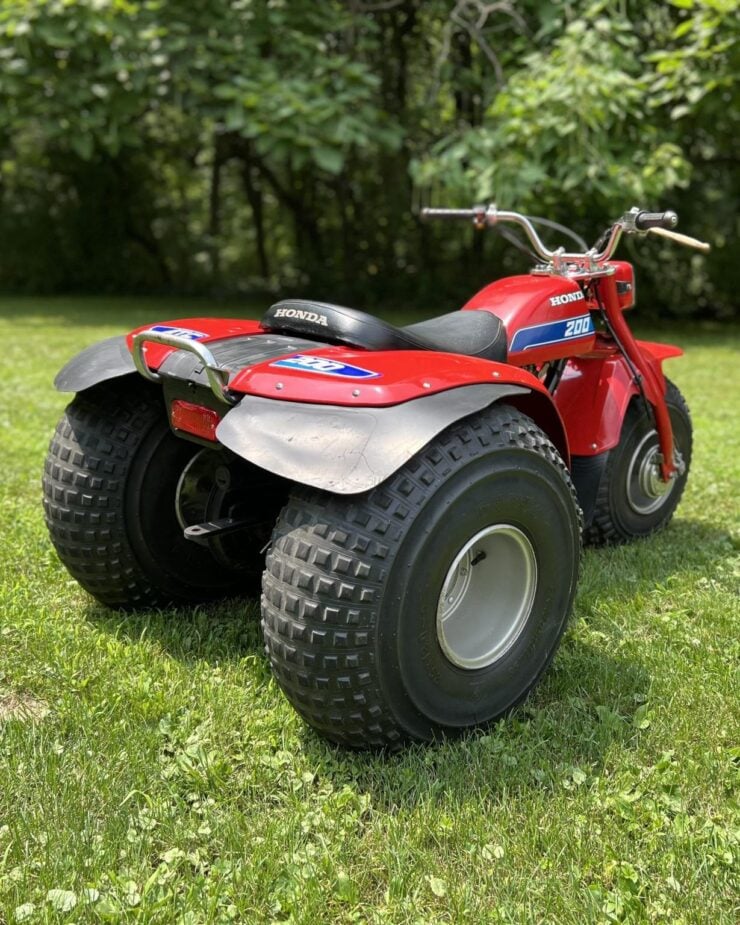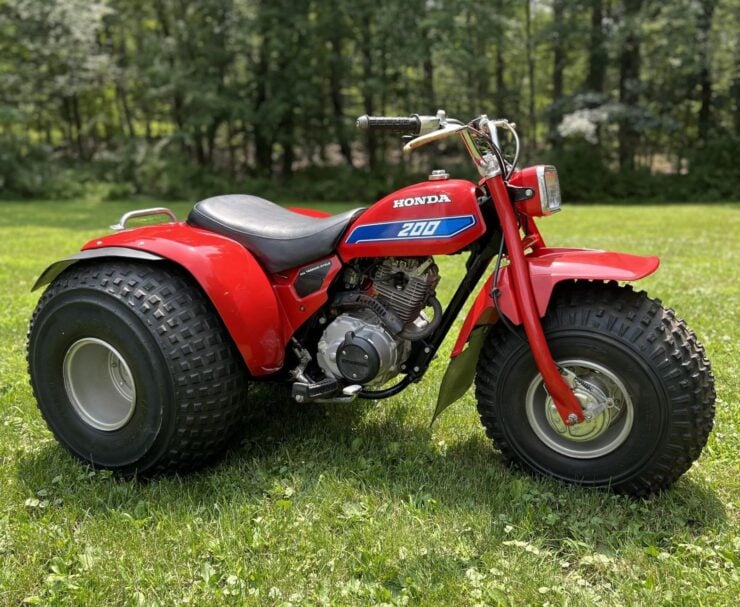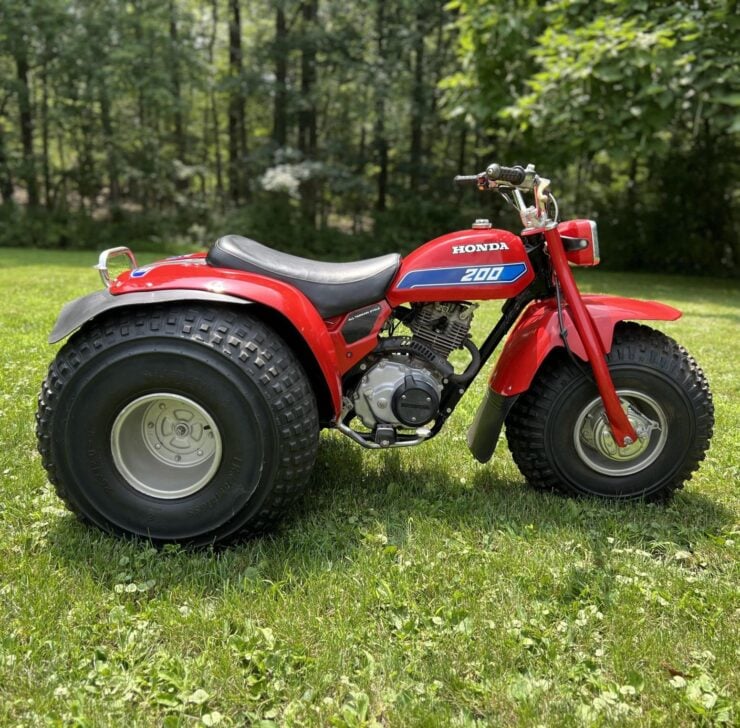This is a remarkably original 1982 Honda ATC 200 three-wheeler that remained in the possession of its first owner from new until 2024 – an impressive 42 years.
The ATC 200 was one of the most approachable of Honda’s three-wheelers, with an automatic clutch, a 5-speed semi-automatic transmission, front and rear brakes, and huge balloon tires that helped to soak up bumps and jolts.
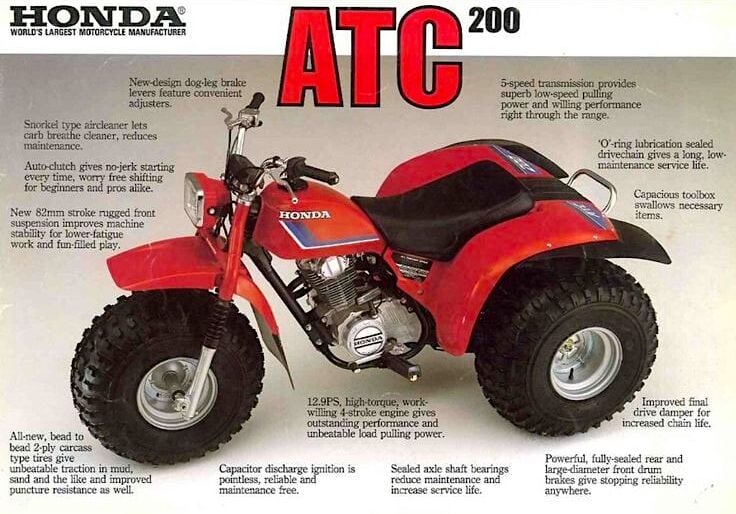

History Speedrun: The Honda ATC 200
Honda introduced the ATC 200 in 1980, it would mark a pivotal point in the evolution in the company’s line of ATCs (all-terrain cycles). While Honda had already popularized the recreational three-wheeler market with its first ATC in 1970, the ATC 90 (also known as the US 90), the ATC 200 was one of the models that brought larger displacement, more off-road capability, and a much broader consumer appeal to the lineup.
The ATC 200 wasn’t the first big three-wheeler Honda made, but it was arguably one of the most influential. The first was a utility-oriented three-wheeler designed for both fun and for work applications, largely in the farming and agricultural sectors.
Honda ATC 200 Specifications + Variants
It was powered by a 192cc four-stroke air-cooled engine, and it offered significantly more torque than the earlier 90cc and 110cc models. It came equipped with a five-speed semi-automatic transmission and an automatic clutch, making it approachable for riders who didn’t have experience with manual motorcycle transmissions.
According to Honda’s factory specs, the engine produced 14 bhp, which was ample for light hauling, trail riding, and general off-road utility tasks. It certainly wasn’t a speed demon, but it was never meant to be – it was intended for simple fun or tasks around the farm.



One of the key features of the early ATC 200 models was the use of balloon-style low-pressure tires in lieu of any formal suspension system. The lack of telescopic front forks or rear motorcycle-style coil and shock units helped keep production costs down, which in turn helped keep the ATC 200 quite cheap for consumers.
These tires absorbed shocks remarkably well, and their broad width and chunky tread pattern made them ideal for a huge variety of off road terrain – front deep beach sand and mud to grassy fields and forest trails.
Curb weight hovered around 282 lbs (128 kgs), making it relatively easy to maneuver compared to future four-wheeled ATV designs. ATC riders could often get off the bike and manually drag or push it over or around a difficult patch – a feat that would be impossible as weights increased.
In 1981, Honda released a more refined version known as the ATC 200E “Big Red”, which added a rear cargo rack, larger fenders, and most significantly, electric starter. This model really helped solidify the ATC 200’s role in farming, hunting, and off-road industrial use.
Later iterations like the 200M, 200S, and 200X introduced more performance, rear suspension, and in the case of the 200X, a full manual gearbox with a performance-oriented cam and exhaust system that significantly boosted power.
Honda’s three-wheelers dominated the ATV market throughout the 1970s and early 1980s, and the ATC 200 variants were the brand’s best-sellers in the segment. However, safety concerns began to mount as accident reports and lawsuits involving inexperienced riders began making headlines.
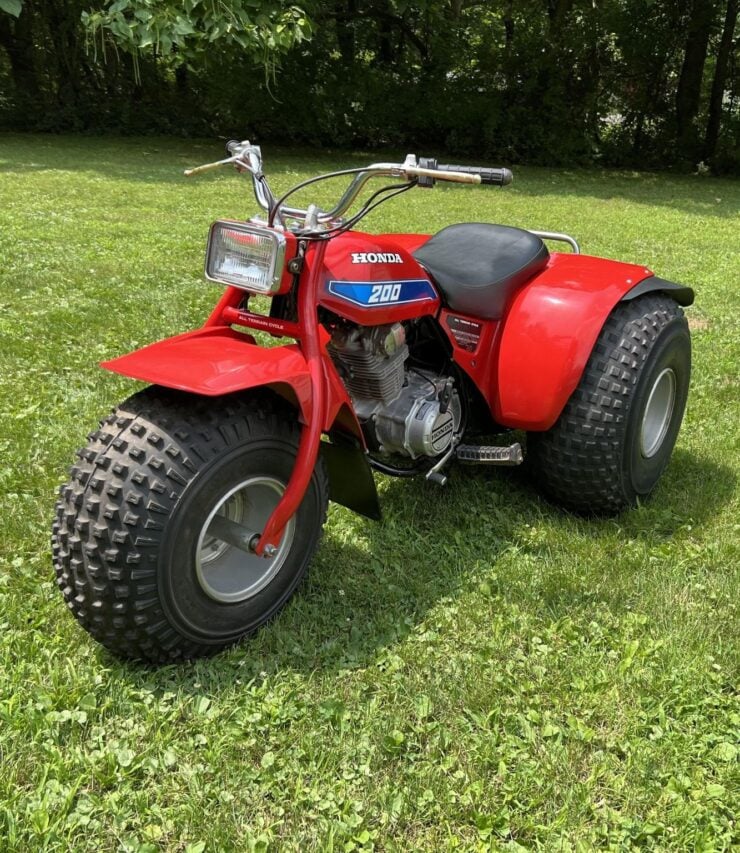


The End Of The Three-Wheeler
The inherent instability of a three-wheeled design led to a federal crackdown. There had been a significant number of injuries, mostly broken arms and collarbones, and a number of tragic fatalities. Although Honda made improvements, the entire ATC line was discontinued by 1987 under an agreement between manufacturers and the US Consumer Product Safety Commission.
Production would shift to four-wheelers at this time, commonly called quad bikes or quads, and these remain by far more most common form of ATV out on the trails today.
The 1982 Honda ATC 200 Shown Here
The three-wheeler you see here is a remarkably original Honda ATC 200 from 1982. It belonged to its first owner for 42 years between 1982 and 2024, and it received some new paintwork in 2023 before it was sold.
It rides on a mixed set of Cheng Shin and Ohtsu tires, and as you would expect it has no traditional suspension to complicate things, with braking achieved by a single front drum, and a single rear drum attached to the rear axle.
On the handlebars you’ll find a thumb-operated throttle, a front brake lever, and switchgear for the lights and ignition. The 192cc single-cylinder engine has a recoil starter, an electronic ignition, and a compression release mechanism that makes starting a little easier.
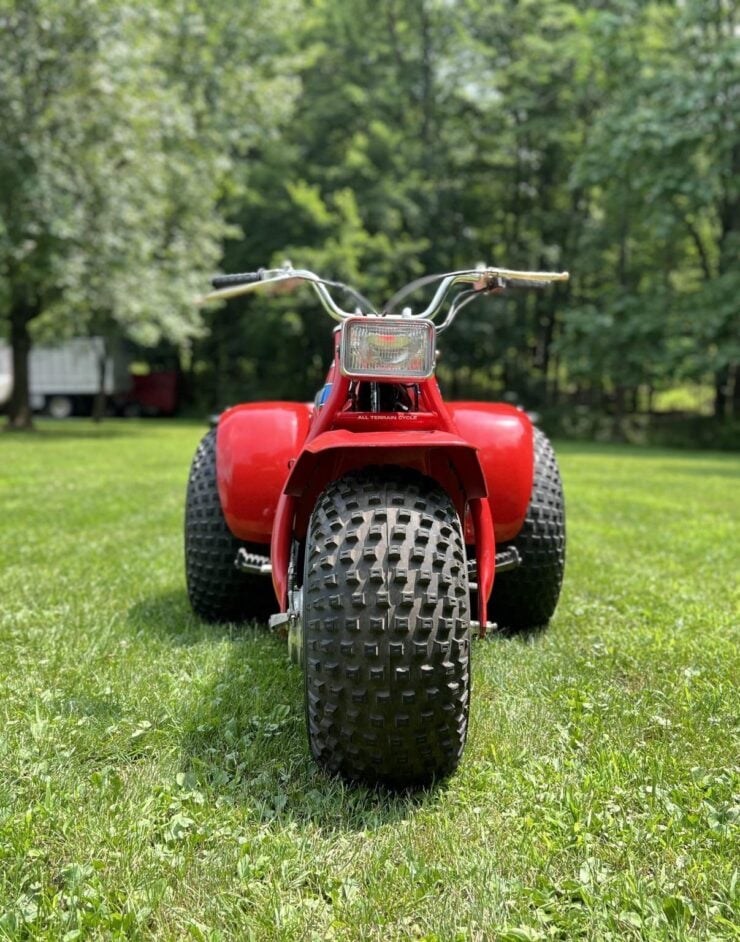


The seller notes that in early 2025 the carburetor was overhauled, the oil was changed, and the spark plug was replaced. There is no known mileage figure, as these were never fitted with a speedometer or odometer.
It’s now being sold out of Summit, New Jersey with a bill of sale on Bring a Trailer, you can visit the listing here if you’d like to read more or register to bid.’
Images courtesy of Bring a Trailer


